- Hidden Crosses at Istanbul Archaeological Museum
- Hidden Crosses in Archaeology Museum Istanbul – Storage Section
- Istanbul’s Christian Archaeology in the Cafe Garden Monuments
- Hidden Crosses over the Cafe Terrace
- Byzantine Ruins on the Istanbul Archeology Museum Walkway
The pathway between Topkapi Garden Park and Gülhane Park offers a free tour of Byzantine ruins. Three areas contain a smattering of hidden crosses, demonstrating the cross’s importance to Byzantine believers. This walking tour includes items inside the museum’s courtyard, which is found on my YouTube channel, Exploring with Nakhati Jon.
I have placed a google map marking the numerous spots within the Archeology Museum’s courtyard and outside the entrance. This write focuses on the external area of the museum.

Byzantine History is more than scattered crosses on the ground; it is the story of an expected hope found in Christ. The political tale shows authorities who tried to display their faith in rock.
As one comes from the Topkapi area, the ruins on one’s right, despite being scattered along the wall of the Archeology Museum, offer a glimpse into Byzantine history. Of particular interest is a Constantine-era sarcophagus deteriorating under the elements of nature.
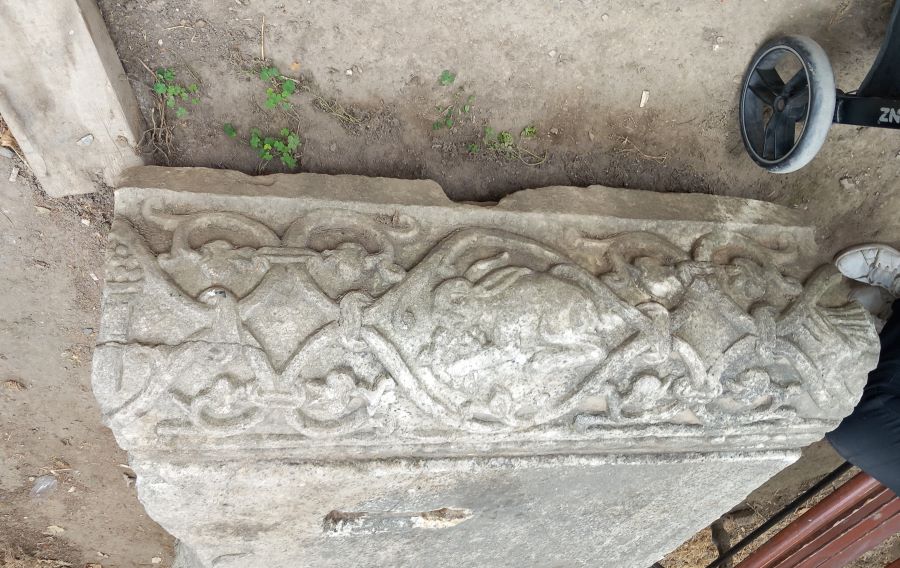
Near the entrance on this side is a Byzantine stone with a Hare (Rabbit). The hare represented fertility in Roman art and Rebirth in Byzantine depictions. The marble image sits upside down near the path.
Other side Byzantine ruins near the Mint Wall

The Byzantines displayed marble cross panels as church interior dividers. These displays loomed large at the front of the church, separating sections. This one exhibits the tree of life framed with a cross-like border, yet squeezed between a pillar and a grave.
This cross capital (upside down insito) with ionic scroll designs would have sat upon a pillar, most likely greeting those entering the church area. The cross became the central projection in this capital.
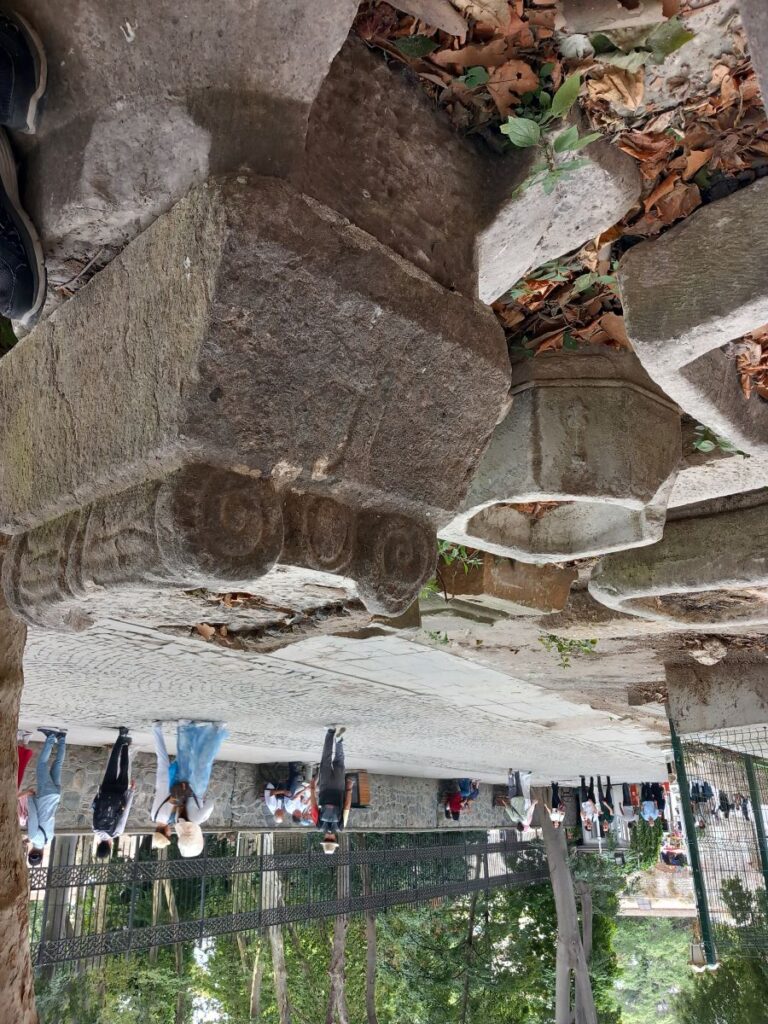
The Corner Hidden Crosses towards Gülhane
As one walks toward the Gulhane Park, a small corner lot sits ready to show forgotten ruins. On the left is the picture from 2023, when the pillar stood with a capital; now, the capital is on the ground. In the 10th-century mosaic in the Hagia Sophia, the flower-like cross is displayed upon Justinian’s crown, in which he presents the church’s rendition to Mary and baby Jesus.[1]https://historum.com/t/the-fleur-de-lis-a-byzantine-imperial-motif.130878/


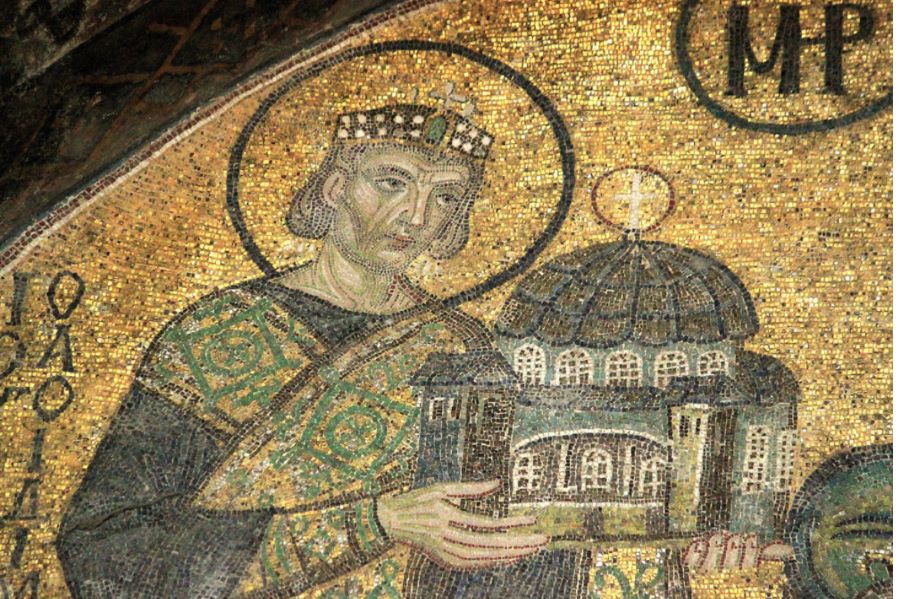
Byzantine ruins on the way to Gülhane
Just around the corner, a few more hidden items lay exposed to the elements.

The Byzantines used Greek letters for seals and monograms. This one (laid upside down insito) forms the cruciform monogram, where letters form on each end of the cross. The name of Jesus on the right and left (I and C form Ιησούς, the Greek word for Jesus), and then the upper frame marks the family name “T” and “A” at the bottom, most likely relates also.[2]https://www.academia.edu/106492501/Reading_and_Displaying_Monograms_on_Byzantine_Signet_Rings?b=25_percent_vector Possibly this is capital marking for Tiberius III whose given name Apsimar marks the lower portion. He ruled from 698 to 705 AD.
Tiberius III rule ended suddenly in a revolt and Justinian II replaced him, whose monogram possibly is on the opposite site of this capital (markings of a vertical I and A – Ἰουστινιανός). On observation, the pockmarks possibly demonstrate a second use of this side of the capital when Justinian II came back into power. He ruled from 685 to 695 and then again in 705 to 711 AD.
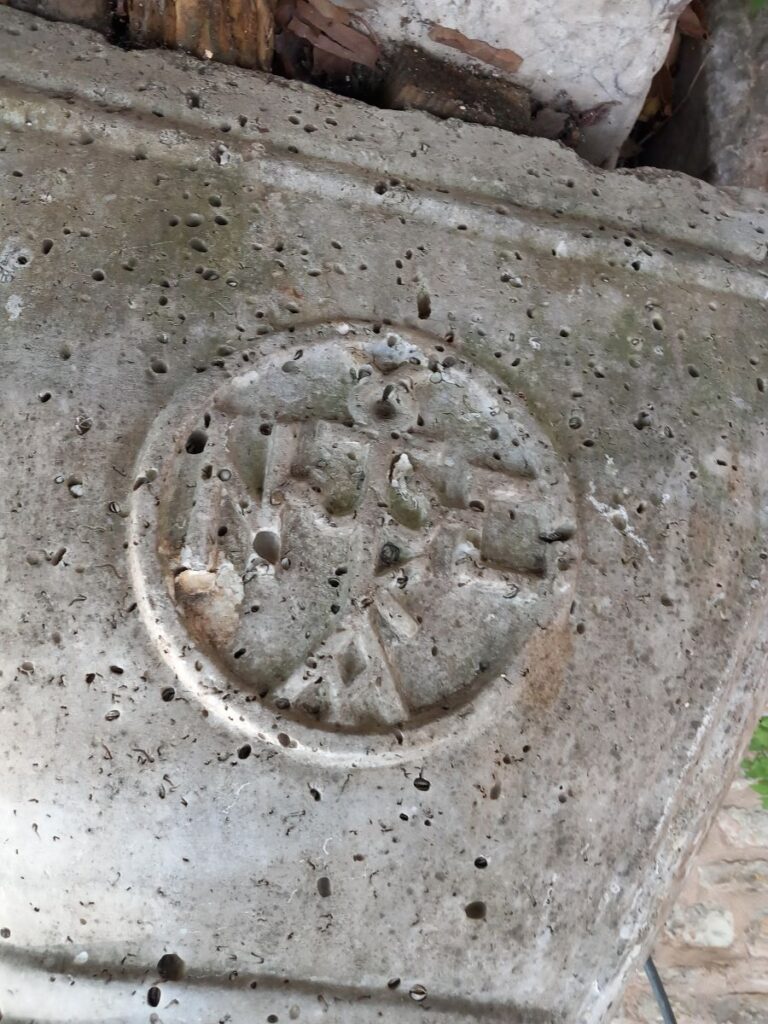
Check out my other walking tours, writings on God’s Oneness, or insights to the Hagia Sophia.
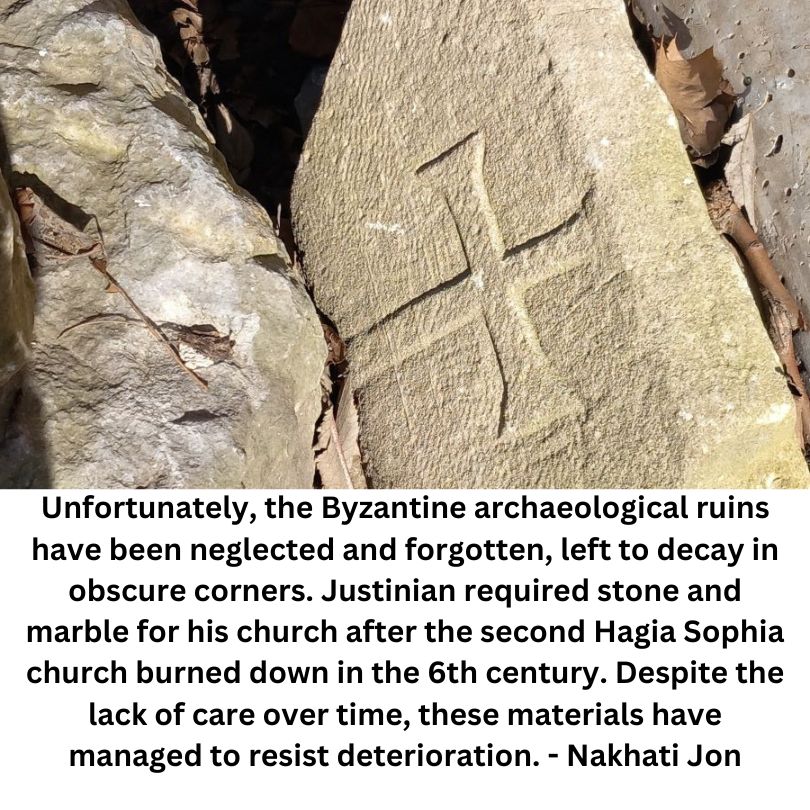
Dear Nakhati Jon, I saw the Byzantine ruins at where you mentioned them to be.. It is extremely sad that they are even in a poorer condition nowadays in 2025, with garbage piling and tourists sitting and stepping on them..
Yes, it is pretty sad. I record where they are currently for in a few years, they may be completely out of sight.